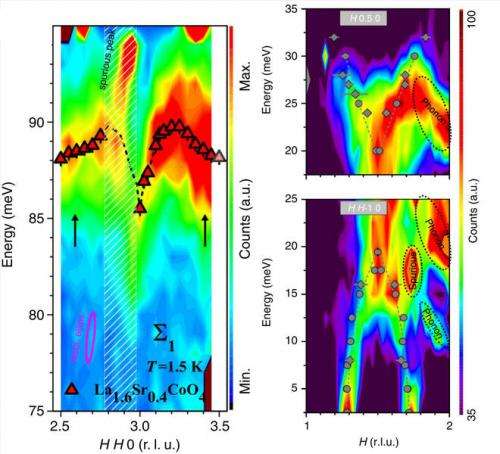Neutrons cast serious doubt on major 'suspect' in search for origin of high-temperature superconductivity

Superconductivity, the property of certain metals of opposing zero resistance to the passage of an electric current when cooled down below a critical temperature Tc is a highly prized property in both scientific research and industry. Able to form powerful low-consumption electromagnets, they are already used in MRI and NMR machines, mass spectrometers, and particle accelerators. The still relatively low temperatures required to induce this valuable property however, currently restrict wider commercial exploitation.
Progress in attaining superconductivity at higher temperatures was in the past mainly driven by fortuitous discovery. This is a rather unsatisfying situation. For researchers to optimise and finally engineer the properties of superconducting materials a thorough understanding of the superconducting mechanism would be desirable. This understanding is still lacking for the superconductors operating at elevated temperatures.
A popular suspect for causing superconductivity in high Tc materials is charge stripes. The stripes are created by a process known as 'doping' where an element with a different number of electrons (usually less electrons) is introduced into the buffers between the superconducting layers thus creating a charge reservoir that either may pump electrons into the layer or may extract electrons from the layers thus creating holes. These extra electrons or holes have a propensity to organize themselves into stripes. While these stripes can be observed directly when static they become difficult to observe when fluctuating. As it is the fluctuations that are supposed to play an important role in high-Tc superconductivity – no static charge stripes are observed- we have to look for indirect evidence. So far charge stripes were always accompanied by a very specific magnetic excitation spectrum given the name of 'hourglass' spectrum. Hourglass spectra are equally a hallmark of high-Tc superconductors. It was, therefore only logical to conjecture that hourglass spectra are conditioned by charge stripes and that fluctuating charge stripes should be present in the high Tc materials.
To investigate this relationship further a team or researchers from the Max-Planck-Institute in Dresden, Germany working at the ILL in Grenoble and LLB in Saclay studied the magnetism, magnetic excitations, charge ordering and electron–phonon coupling in a stripeless single-layer perovskite cobaltate compound. Whilst the compound was similar in structure and make-up to the compounds studied previously that produced the hourglass dispersion patterns, the lack of stripes should, according to the popular belief, produce no such excitation patterns.
And yet, in a new paper published in Nature Communications the team did indeed observe a familiar magnetic excitation spectrum with all the basic features of an hourglass spectrum. Their findings dismiss the link between the stripes and the hourglass dispersion in this cobaltate material.
As well as cautioning researchers when it comes to the stripe theory of superconductivity, the team also provided some evidence to support alternative causes of the hourglass excitations. In their paper they suggest that a magnetic effect known as frustration, where atoms within the crystal lattice are prevented from aligning with respect to each other due to the conflicting demands they receive from all the neighbouring atoms, creates a perfect balance of interaction that could account for the hourglass spectrum. This is particularly interesting as it links two highly active research fields that of superconductivity and that of frustrated magnetism.
More information: "Hour-glass magnetic spectrum in a stripeless insulating transition metal oxide" Y. Drees, D. Lamago, A. Piovano, A. C. Komarek, Nature Communications 4, Article number: 2449. DOI: 10.1038/ncomms3449 Published 19 September 2013
Journal information: Nature Communications
Provided by Institut Laue-Langevin





















